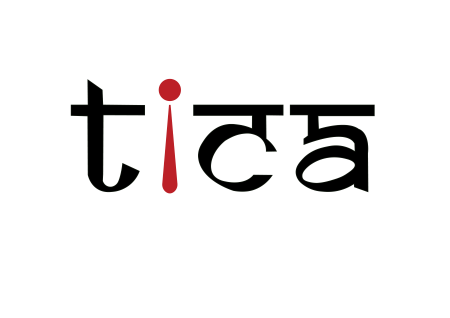
The Complexity of Democracy: Anita Dube’s Vision at Triveni Kala Sangam
Share
Decoding “The Complexity of Democracy”: Anita Dube’s Groundbreaking Exhibition at Art Heritage, New Delhi
| by Niemisha Sharma
New Delhi, 2025 — Acclaimed artist, writer, and curator Anita Dube continues to redefine the landscape of Indian contemporary art with her exhibition “The Complexity of Democracy” at Art Heritage, Triveni Kala Sangam. Unfolding in two distinct movements across 2025, the exhibition explores the intersections of citizenship, artistic labor, and community through a polyphonic curatorial lens, using Kaladham, a thriving artist-studio colony in Greater Noida, as both site and metaphor.
From Diagnosis to Reconstitution
Part 1 (January 16–March 8, 2025) examined the concept of the “lost Citizen,” investigating inequalities rooted in caste, class, religion, and economic background among artists. While impactful, the first iteration still operated within traditional exhibition structures.
Part 2 (August 1–September 13, 2025) shifts the framework dramatically, reimagining the exhibition as a mela-like space—a festival of thought, play, and camaraderie. Dube’s approach dissolves hierarchies, allowing diverse artistic voices to coexist without flattening differences. She describes this as a “polyphonic curatorial principle,” reflecting the contradictions and complexities inherent in postcolonial India and its socio-political economies.
Kaladham: Ground Zero of Inquiry
Kaladham, a peri-urban constellation of studios in Greater Noida, serves as the exhibition’s conceptual and physical foundation. Home to artists from varied social and economic backgrounds, it embodies the push-pull of aspiration and precarity, tradition and modernity, urban and rural realities. By situating the exhibition within this lived ecology, Dube turns the studio itself into both medium and message, demonstrating how art-making is inseparable from social, economic, and infrastructural conditions.
Curatorial Philosophy
Rejecting conventional, top-down gallery models, Dube selects works to form a weave of ideas, prompting audiences to think critically about inclusion, exclusion, and democratic ideals. The materiality of each work—the hand-worked surfaces, reclaimed objects, and craft processes—carries histories of labor, inequality, and resilience. Far from fetishizing the handmade, the exhibition foregrounds the ethics of making and the nuanced choreography between artist, material, and context.
Political resonance runs deep. In Part 1, the figure of the “lost Citizen” interrogates whether the constitutional promises of rights and representation resonate in fine arts, where market logics often dominate. Part 2 widens this inquiry, adopting the mela format to distribute attention, create multiple centers of focus, and invite visitors to experience democracy as a participatory act rather than a symbolic representation.
Participating Artists
Featuring both Kaladham-based and external artists, the exhibition includes:
Abhijit Pathak, Ashish Kushwaha, Atul Bhalla, Avinash (photography), Chuguli Sahoo, Devendra Shukla, Gigi Scaria, Ginni Singh, Hemavathy Guha, Laxmi J.P.P., Milan Sharma (Aadi), Mohan Shingane, Nidhi, Nitiksha Dawar, Jaan, Rajesh Ram, Rambali Prajapati, Ravi Chaurasiya, Rohini Reddy, Sangita Datta, Satyakam, Shailesh Mohan Ojha, Shailesh B.R., Shivendra Tanwar, Sudi Phazra, Sushanta Guha
Through their Instagram handles, visitors can extend their experience digitally, following the artists’ ongoing practice and engagement beyond the gallery walls.
Experiencing the Exhibition
Dube encourages visitors to approach the exhibition in multiple ways:
- Students & Early-Career Artists: Observe making processes, improvisations, and how constraints shape creative outcomes.
- Collectors & Patrons: Consider visibility, value, and studio conditions, reflecting on the ethics and infrastructure behind the work.
- General Public & Neighbors: Engage directly with materials, textures, and spatial arrangements; no prior art vocabulary required.
- Women, Workers, Activists: Witness traces of labor, social hierarchies, and histories embedded in objects, forging solidarity through observation.
Three recommended modes of engagement include following your instincts, double-looking at selected works, and conversing with fellow visitors—turning observation into participatory democracy in practice.
Materiality, Form, and Political Resonance
The exhibition foregrounds the ethics of making, emphasizing material intelligence over purely conceptual frameworks. Works reveal conditions of marginality, histories of exclusion, and the continuing effects of colonial and postcolonial inequities. By elevating labor-based practices, Dube challenges the elitism of the market and academic frameworks, presenting a nuanced reading of Indian contemporary art as inseparable from lived social realities.
The political dimension is procedural rather than symbolic: the exhibition enacts democracy by decentralizing attention and dispersing curatorial authority. Dube invokes thinkers like Walter Benjamin and Pier Paolo Pasolini, linking historical debt, peasant consciousness, and embodied knowledge to contemporary art practices. The result is a gallery that functions as a civic rehearsal—a space where visitors, artists, and institutions co-practice attentiveness and reflection.
The Takeaway
The Complexity of Democracy does not provide tidy answers. It composes a commons: pleasure and critique coexist, historical injury meets creative repair, and the “lost Citizen” emerges through collective attention to materiality, process, and civic engagement. Dube invites viewers to consider whether the way we gather around art can serve as a microcosm of the democratic ideals we aspire to.
Visiting Details
Location: Art Heritage Gallery, 205 Tansen Marg, Triveni Kala Sangam, New Delhi Dates: Part 2 open through September 13, 2025
For more insights, walkthroughs, and artist interactions, signup to our newsletters.
